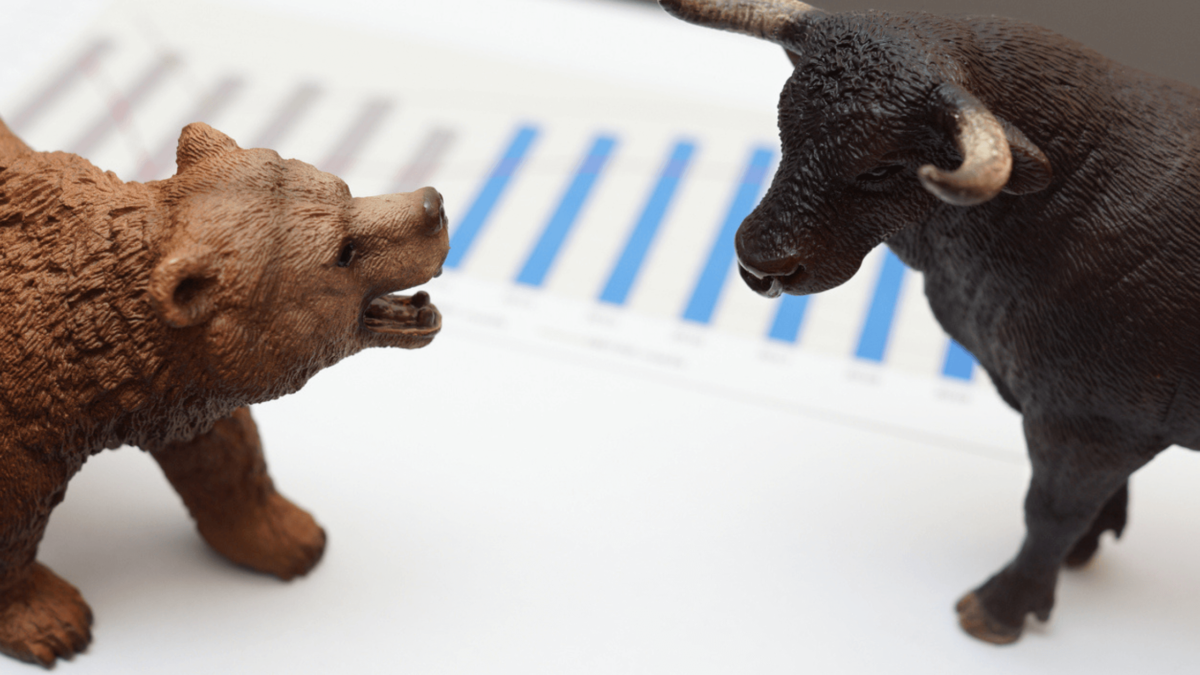3 Disturbing Messages From the Fed: Here’s What Investors Can Do
September 26, 2022

That sinking feeling in US Stocks
In the US stock market, the S&P 500 Index looks likely to break below its June low as reality sets in, shattering hopes for a “happy ending” (also known as a “soft-landing”) to this real-life financial drama.
The Federal Open Market Committee (FOMC) sent three disturbing messages to the market last week, via its economic projections for end-2022 and end-2023:
- Inflation is not “transitory” as Treasury Secretary Janet Yellen suggested last year – even as headline inflation eases, core inflation will likely stay stubbornly high.
- The Fed’s policy rate will stay higher for longer – with the Fed Funds Target Rate likely to be in the 4.50%-4.75% range by end-2023.
- A US recession is almost certain next year.
So, in response the S&P 500 Index came within a whisker of our near-term forecast level of 3,636, and the outlook is for more losses beyond that.
In last week’s Big Money, I wrote that the S&P 500 had broken an important technical support and looked “headed back to retest its June low of 3,636.”
That’s almost a done deal now, with the S&P 500 reaching an intraday low of 3,647 last Friday. The index should stage a fightback from around the current level.
Markets do not move in straight lines. After ten sessions of aggressive selling, the S&P 500 has entered technically oversold territory on daily charts.
But the bigger picture on weekly and monthly charts continue to suggest more downside dangers ahead.
Running in tandem, the increasingly negative fundamentals are likely to fuel already bearish technical inclinations.
Fed projections take down markets
The 75-basis point Fed rate hike last week was expected but the market glimpsed likely coming horrors in the FOMC’s detailed forecasts.
The US Federal Reserve hiked its target rate by another 75 basis points (bps). But that wasn’t the reason for the aggressive sell-off last.
That was entirely priced in by the Fed Funds futures market well before the FOMC.
What did trigger it was that the Fed showed its hand, i.e. rates will be higher for longer. The devil was in the details of the FOMC forecasts.
What was new was the Fed’s upgrades of its projected inflation rates and appropriate target rate. The FOMC median view of year-on-year PCE inflation for end-2022 was raised from 5.2% to 5.4%.
The median forecast for PCE inflation for end-2023 went up from 2.6% to 2.8%.
Significantly, it sees core PCE inflation as even more of a problem, raising its previous median forecast of 2.7% by end-2023 to 3.1%. That is, it sees core PCE inflation higher than the all-items PCE inflation figure by end-2023.
More worrying for the market was the suggestion by the FOMC that interest rates should remain higher for longer. The median view of the appropriate Fed Funds rate by end-2022 went up from 3.4% to 4.4%.
That suggested a Fed Funds Target Rate of 4.25%-4.50% by year-end, which means another 75-bp hike in November and a 50-bp hike in December.
Beyond that, the median view of the appropriate rate by end-2023 went up from 3.8% to 4.6%. The overall message is there is nothing quick or easy about taming US inflation.
Recession likely coming in Q2 2023
Investors need to read between the lines – the Fed told the market it is expecting a recession around 2Q23.
Along with that higher Fed rate projection, the Fed’s median view of US unemployment went up to 4.4% next year. Looking at it through that lens, the Fed is effectively bracing for a recession next year.
That is not surprising to me – indeed I have been writing for months about a recession being the cost of crushing inflation. But coming from the Fed, it dashed the hopes for a soft-landing among the optimists out there.
The FOMC’s 4.4% unemployment view was almost a coded message for a recession. And the message is glimpsed with a quick back-of-the-envelope calculation, using the Sahm Rule Recession Indicator.
This indicator, according to the Fed:
“Identifies signals related to the start of a recession when the three-month moving average of the national unemployment rate rises by 0.50 percentage points or more relative to its low during the previous 12 months.”
If you project a straight-line rise in the unemployment rate from 3.7% for August (with a 3-month moving average of 3.6%, and a low in the 3-month moving average of 3.57% in July), you will get that 0.5 percentage point rise versus the low of 3.57%, by March of next year.
In a similar vein, the 10Y-2Y US Treasury yield curve went further inverted, to -0.51%, which is the deepest negative figure since 1981.
That too suggests a recession is likely but the timing from the point of first inversion (in this cycle, it was in July) historically varies greatly, from 10 month to 34 months.
Recession not priced into earnings
Yet the S&P 500 Index’s earnings have yet to reflect a recession, so investors can expect earnings disappointments next year.
If we are looking at a recession – and my guess is that it will happen in Q2 2023 or Q3 2023 – the S&P 500’s earnings are likely to fall sharply.
Historically, the S&P 500 Index has either moved in tandem or slightly ahead of earnings estimates. This time, the S&P 500 has retreated very substantially without much decline in earnings estimates (see below).

Sources: CGS-CIMB Research, Bloomberg
My interpretation of this is that the US economy has been overheated by so much stimulus that economic activity is still supporting earnings.
However, that all changes when rising rates – which have been the key driver of lower index levels via the higher discount rate – eventually brings on a recession.
Going back to the recession of 1969-1970, the average S&P 500 earnings decline in a recession is 21%.
The market consensus is still expecting 8% earnings growth for 2023. There will likely be a lot of earnings downgrades next year.
So far, the decline in stock prices appears to largely reflect a higher discount rate for valuations. When earnings estimates start falling, that will be another negative weighing down the index.
A 10-year US Treasury yield of over 5%?
We haven’t even seen the worst of the impact of rising rates on the risk-free rate. Last week, the 10-year US Treasury (UST) yield broke above the June high of 3.5%, hitting an intra-week high of 3.83% and closing the week at 3.70%.
What is even more significant has been the sustained break above a 35-year downtrend in the 10-year yield. That breakout started in March of this year (see below).

Sources: CGS-CIMB Research, Refinitiv
So, this is no “flash-in-a-pan” move. Indeed, every pull back in the 10-Year UST yield over the past 18 months has been supported by its 200-day moving average. This feels more like a generational shift. This is big.
So, how high can the 10-year yield go? A move to 4.0%-4.1% looks likely to happen quite quickly, and beyond that, 5.0% within the next 12 months is not a crazy thought.
Since 2010, the 10-Year UST yield has had an average 27-bp spread over the PCE inflation rate.
And that is a modest spread, compared to the almost 100 bps during the inflationary surge of 1977-1980, and 60-year (1962-2022) average of 258 bps.
Have a look at how the real 10-Year UST yield (adjusted for PCE inflation) has bounced after recently hitting a cyclical low. This could be a start of a major mean reversion process.
Now, let’s go back to the FOMC’s median guidance for PCE inflation of 5.4% for the end of this year.
It seems a little optimistic given that the rate is running at 6.3% year-on-year (y/y) at the moment. But let’s suspend scepticism for the sake of this exercise.
If we were to apply the modest post-2010 spread of 27 bps on top of that, the 10-Year UST yield could arguably be around 5.7%. If that happens, the markets will get a lot uglier.
Stock strategy ideas for a bear market
I have been writing in this column about the risk of a bear market since February this year. And we are now back again in a bear market, despite that bounce from mid-June to mid-August.
The S&P 500 ended last week 23% below its intraday high in January.
The simplest (but also riskiest, it has to be said) strategy remains shorting Developed Market equities on that negative correlation between the 10-Year UST yield and the S&P 500.
Variations of that include buying put options and doing CFDs to capture gains from possibly lower prices.
I am also staying with my idea of long-short trades – long value stocks, short growth stocks (see below).

Sources: CGS-CIMB Research, Refinitiv
Another variation of that is a long-short spread trade – long Developed Market defensive stocks, short Developed Market cyclical stocks.
The below chart shows the historical performance from the reverse strategy – long cyclicals, short defensives – set against the US Manufacturing PMI.

Sources: CGS-CIMB Research, Refinitiv
As the US Manufacturing PMI declines (as it should if the US is going into recession), then the spread trade works against long cyclicals/short defensives.
So, the idea is to do the opposite – that is, to go long defensives/short cyclicals – as the US economy deteriorates.
On the same theme, the MSCI ASEAN’s relative performance against the MSCI World has been generally tracking the relative performance of world value versus world growth stocks.
So, if investors continue to favour world value over world growth, ASEAN equities could be beneficiaries in relative performance terms (see below).

Sources: CGS-CIMB Research, Refinitiv
Say Boon Lim
Say Boon Lim is CGS-CIMB's Melbourne-based Chief Investment Strategist. Over his 40-year career, he has worked in financial media, and banking and finance. Among other things, he has served as Chief Investment Officer for DBS Bank and Chief Investment Strategist for Standard Chartered Bank.
Say Boon has two passions - markets and martial arts. He has trained in Wing Chun Kung Fu and holds black belts in Shitoryu Karate and Shukokai Karate. Oh, and he loves a beer!







